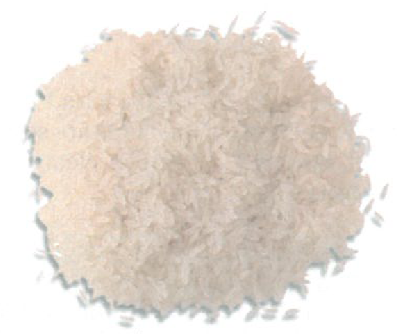Description: Arroz Carolino das Lezírias Ribatejanas PGI means the hulled caryopsis of the Aríete variety (2nd generation) of the Japonica subspecies of the Oryza sativa L. plant, duly dried, shelled, whitened and polished.
Production method: The whole of the production cycle takes place in the defined geographical area, from the sowing of the seed to harvesting and packing, is carried out in the same area. Harvesting is governed by special rules which cover dates, phenological stage and moisture of the grain (including the machinery used for harvesting, transportation, storage, drying, hulling, whitening and polishing).
Distinctive features: This variety of rice has become naturally adapted to the geography and climate of the area, to the type of soil, to the water used for irrigation and the temperate climate. These are all factors which make the Arroz Carolino das Lezírias Ribatejanas PGI rice a unique speciality, with its flavour, aroma and its capacity to absorb water during cooking. Arroz Carolino das Lezírias Ribatejanas PGI has a low amylose/amylopectin ratio, has high capacity to absorb water and the aromatic molecules of condiments, and a very high industrial yield.
Production area: Arroz Carolino das Lezírias Ribatejanas PGI is grown in all the parishes of Azambuja, Alcoentre, Aveiras de Baixo, Aveiras de Cima, Macussa, Manique do Intendente, Vale do Paraíso, Vila Nova da Rainha and Vila Nova de São Pedro in the municipality of Azambuja; Barrosa, Benavente, Samora Correia and Santo Estevão in the municipality of Benavente; Foros de Salvaterra, Glória do Ribatejo, Granho, Marinhais, Muge and Salvaterra de Magos in the municipality of Salvaterra de Magos; Alhandra, Alverca do Ribatejo, Cachoeiras, Castanheira do Ribatejo, Calhandriz, Forte da Casa, Póvoa de Santa Iria, São João dos Montes, Sobralinho, Vialonga and Vila Franca de Xira in the municipality of Vila Franca de Xira; Azervadinha, Coruche, Couço, Erra, Foros da Branca, Lamarosa, São Torcato and Santana do Mato in the municipality of Coruche.
History: The geographical area where Arroz Carolino das Lezírias Ribatejanas PGI rice is grown has special characteristics relating, in particular, to the soil (differentiated pedogenesis), water quality, number of hours of sunshine and narrow range of temperatures, as a result of its location on the estuary of the River Tagus. The area is low-lying (less than 100 m a.s.e.) and practically flat (riverside meadows and plains). The soil is composed entirely of a mixture of brown, clayey alluvial and colluvial lutum, created from fertile deposits and left by floods and tides as sediment on sandy layers. These conditions, together with a pH level of between 5,5 and 6,5, but which may range from 4,5 to 8,7, and the saltiness of the waters, since the region is subject to tidal influence, render crops other than rice unviable almost throughout the area. Growing rice in the above mentioned areas is sustainable inasmuch as it enables the associated ecosystem, the fauna and the flora, to be maintained and furthermore avoids agricultural problems such as the salinisation of the soil. Moreover, very thorough and specific knowledge has developed in the region as a result of having grown rice for over two centuries.
Product specification (pdf)
Producer group
ORIVÁRZEA - Orizicultores da Várzea de Samora e Benavente, S. A.
Control and certification body
Kiwa Sativa – Unipessoal, Lda.
Control plan
Control plan (pdf)
Publication in EU official journal
Regulamento (CE) n.º 670/2008 da Comissão de 15.07.2008 - L 188/16
Regulamento (CE) n.º 510/2006 do Conselho de 31.10.2007
Publication in the Portuguese official journal
Despacho n.º 19713/2006 de 27.09.2006
Aviso n.º 4568/2005 de 30.03.2005



